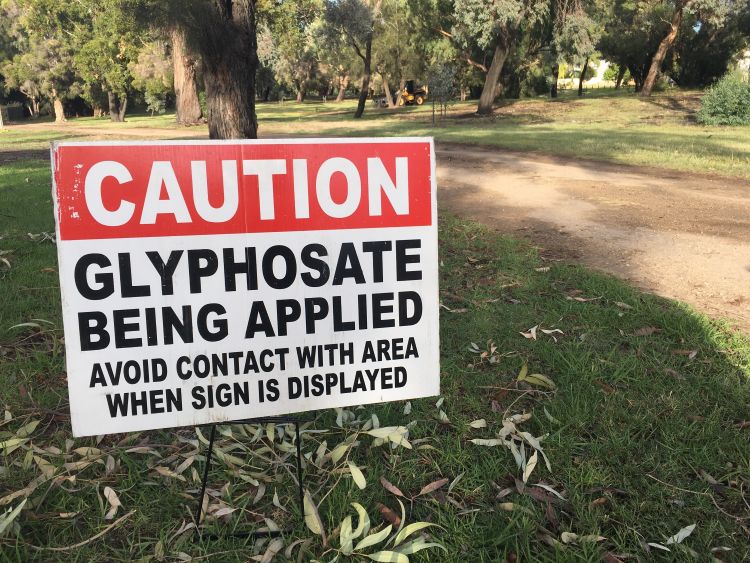Picture a vast wheat field under a clear sky, where a farmer in a tractor cabin releases from a large herbicide sprayer implement a fine mist of Roundup. It is harvesting time, and glyphosate – the active ingredient in Bayer’s (formerly Monsanto’s) blockbuster herbicide –doesn’t just kill weeds; it forces the crop to ripen uniformly and according to a schedule that works best for the farmer, reducing losses and increasing yield.
This scene, repeated across tens of millions of acres from Canada to Cambodia, captures the double-edged sword of glyphosate – a tool that has helped revolutionize modern agriculture but has also sparked fierce debate over its potential overuse and impacts on health and the environment.
Since its 1974 debut, glyphosate has become the key component in the world’s most used herbicide.
Figure 1 – Growth in consumption of glyphosate in the United States.
Glyphosate has become integral to farming “Roundup-ready” genetically modified organism (GMO) crops and forestry silviculture, where in the latter scenario, it is sprayed aerially to favour conifers over competing hardwood species such as aspen, willow, and birch.
Proponents hail glyphosate as essential for feeding a growing population; critics decry it as an environmental and health hazard.
Is it possible that both statements are correct?
Multiple sources indicate that 28 or more countries have implemented bans or restrictions on glyphosate use, often partial (e.g., in agriculture, public spaces, or non-professional applications).
This article dives into the cost-benefit debate, spotlighting agriculture’s gains – including its lesser-known role in crop desiccation – while scrutinizing health-risk claims including carcinogenicity and endocrine disruption.
Do Roundup’s efficiencies justify its shadows? Evidence from both sides will be examined, but first we need some biochemistry background.
Glyphosate, a broad-spectrum herbicide, primarily kills plants by inhibiting the enzyme 5-enolpyruvylshikimate-3-phosphate synthase (EPSPS) in the shikimate pathway. This pathway – found in bacteria, fungi, and plants – is essential for synthesizing aromatic (i.e., contains a benzene ring) amino acids: phenylalanine, tyrosine, and tryptophan. This pathway is not found in mammals.
Aromatic amino acids are obtained through diet. Without aromatic amino acids, plants cannot produce proteins, hormones, or secondary metabolites such as lignin and flavonoids, weakening cell walls and defence systems. Inhibition causes shikimate accumulation, disrupting metabolism and energy allocation. Symptoms include chlorosis, necrosis, and stunted growth, leading to metabolic collapse and death over days to weeks.
Glyphosate resistance in GMOs is commonly achieved by inserting a gene encoding a glyphosate-insensitive version of the EPSPS enzyme, typically from Agrobacterium tumefaciens (nature’s genetic engineer).
This new gene is integrated into the plant genome via Agrobacterium-mediated transformation. The expressed resistant enzyme allows the shikimate pathway to continue, preventing metabolic disruption in the GMO while adjacent weeds are killed.
In the relentless rhythm of agriculture advancement (aka the green revolution), Roundup is not merely a weed warrior; it is a precision instrument for minimizing hassle and maximizing output. Glyphosate is highly effective in broad-spectrum weed control, targeting emerged species pre- and post-planting without harming “Roundup-ready” GMO crops including corn, soybeans, and canola.
In North American prairie provinces, weeds can slash yields by 20-50%.
Glyphosate’s agricultural prowess extends beyond suppression – it is a desiccant that accelerates ripening, a practice that has transformed harvest logistics.
Applied pre-harvest to crops such as wheat, oats, barley, and legumes, it dries plants evenly, synchronizing maturity across fields often battered by erratic weather. In the UK’s wet summers, 78% of oilseed rape (aka canola) is desiccated this way. In Canada’s grain belt, 90-95% of Manitoba wheat acres get the treatment.
This is not incidental; it enhances sucrose in sugarcane, triggers seed release in wheat for slight yield gains, and reduces green debris that clogs combines, easing machinery strain and enabling earlier replanting for double-cropping.
For a 30,000-acre operation, this means harvesting on schedule, dodging spoilage, and fetching premium prices for uniform grain – vital in a market where delays cost thousands daily.
It is important to understand that the “green revolution” has resulted in a rapid and substantial advancement in mechanization of farming equipment. Capital costs have risen dramatically since the 1960s. Figure 2 shows a combine, which combines three separate steps in grain harvesting – reaping, threshing and winnowing – into one tractor.
Reaping is the cutting or swathing of standing plants into a row, threshing is the breaking off of the husked grain kernel from the stalk, and winnowing is the extraction of the kernel from the husk. By combining the three steps in one process, a farmer’s productivity rises while capital expenditures and maintenance costs decrease substantially.
This one-unit operation generally requires moisture content of the grain husk to be less than 15% when the stalk is cut. Otherwise, the grain will quickly rot.
This is a major reason why Roundup is used today – to desiccate or ripen grain before harvesting with combines. A new, high-end combine costs between $650,000 and $900,000 USD.
Figure 2 – A combine reaps, threshes, and winnows in a single process.
Figure 3 shows a swather unit, which uses a similar cutter-head seen on the combine in Figure 2. Note the mixed green-yellow colours in the canola as it is cut and piled in rows behind the swather. This mixed colour indicates that the canola crop has not been sprayed with Roundup and that the moisture content is still too high to be combined.
The rows of swathed canola in this case will desiccate naturally, and the green will fade to light brown. A new swather unit costs between $200,000 and $300,000 USD.
Figure 3 – Swather unit reaping and piling unripe canola.
If a farmer were to revert to swathing before combining to complete the threshing and winnowing stages of harvest, they would still need the sprayer for weed control. Using Roundup eliminates the time and financial cost of swathing, and time is rarely on the side of the farmer in such a weather-dependent industry.
One of the greatest fears of a grain farmer is a cold and wet fall, which can result in the loss of entire crops. Being able to control the timing and pace of ripening affords the farmer many benefits.
Figure 4 – Tractor plus sprayer unit.
In essence, many grain farmers have exchanged a standard swather unit with a sprayer (Figure 4). Capital costs for a new system range from $11,000 to $110,000.
High costs of modern farming equipment include, for example, a large-tracked tractor pulling an air-drill seeder (Figure 5), which costs as much as $1.4 million for the entire setup.
This level of equipment is integral in regenerative farming practices such as no-till seeding.
These large up-front capital costs are correlated with a reduction in the number of small farms since the 1960s. In Canada alone, there were almost 730,000 farms in 1940. As of 2016, there were 193,000.
Larger farms are required to cover the capital and maintenance costs of the ever-increasing mechanization of food production. Is this sustainable?
Figure 5 – Advanced tractor and air-drill seeder, a package that costs about $1.4 million.
Canadian farmer Mike Shewchuk, who avoids the use of Roundup via swathing, concedes: “For efficiency on big farms, (Roundup use) is vital — though I worry about the food chain.”
Shifting to forestry, glyphosate’s role is more niche but critical.
In British Columbia and Atlantic Canada, aerial sprays eliminate aspen and birch around 10-year-old conifer plantations, boosting softwood growth by 20-30% for pulp and lumber.
A helicopter covers 200 acres hourly – unrivaled by traditional manual or mechanical brushing — supporting an industry employing 200,000 Canadians.
However, these efficiencies come at a price.
Roundup’s triumphs mask a darker ledger: environmental wreckage and health alarms that have fueled lawsuits, bans, and global scrutiny. Ecologically, glyphosate’s weed-killing zeal creates ripple effects.
In forestry, aerial spraying in (Canadian province) Nova Scotia’s 2025 drought-stricken woods — approvals for spraying 3,577 acres amid wildfires — kills relatively fire-retardant deciduous trees, birthing more flammable conifer monocultures.
Crown fires – which spread through fuel at the treetops (canopy) – advance much faster in conifer monocultures, exacerbating blazes that scorched Atlantic Canada in the summer of 2024.
Biodiversity is also affected. British Columbia reports 50-70% moose declines in regions that have lost willow browse to glyphosate spray, while pollinators suffer as residues taint nectar and pollen for days post-spray.
Figure 6 – Aerial Roundup spraying in replanted forestry cut-blocks.
Activist groups such as Don’t Spray Nova Scotia Forests protest opacity, with 2025 Halifax Examiner exposés revealing sprays during fire bans. Echoing the Agent Orange scenario, it is a “chemical war” on nature, justified by some as progress but leaving legacies of fire-prone and low-biodiversity forests.
Health costs hit closer to home, with glyphosate’s trace residues – amplified by desiccation – in 50%+ of dietary exposure via wheat, oats, and beans.
The International Agency for Research on Cancer (IARC) classified it as “probably carcinogenic” in 2015, citing limited human evidence (e.g., non-Hodgkin lymphoma in farmers) and sufficient animal data (tumors in rodents at low doses). Non-Hodgkin Lymphoma (NHL), a cancer of the lymphatic system, is linked in studies to glyphosate exposure; e.g., human cohorts link occupational exposure to 41% higher NHL risk.
A 2025 Ramazzini Institute study exposed rats prenatally to EU-acceptable levels (0.5 mg/kg/day), finding dose-related mammary, liver, and kidney cancers, plus early-life leukemias – supporting IARC’s concerns about genotoxicity and oxidative stress.
Bayer, which owns Roundup patent holder Monsanto, is facing $10B+ in U.S. verdicts by 2025.
Glyphosate is also cited for disrupting the endocrine system, mimicking estrogen, and blocking androgens at low doses, per 2021 Chemosphere review – implicating infertility and breast-cancer proliferation.
However, the debate is still highly contentious.
The glyphosate schism pits IARC’s hazard-focused lens against regulators including the EPA, which deem it “not likely carcinogenic” at exposure levels, reviewing 15+ animal studies versus IARC’s eight.
European Food Safety Authority and Health Canada echo this, finding residues (0.1-3.3 µg/kg/day) below acceptable daily intake, posing no dietary cancer risk.
Is there consensus on human health effects?
At the level of inquiry that went into this article, there does not seem to be.
More independent, multi-generational studies, such as Ramazzini’s Global Glyphosate Study
(GGS), probing microbiome-endocrine links, may be necessary.
Roundup’s ledger is stark: agricultural miracles in weed control and ripening that feed nations, forestry efficiencies sustaining jobs – yet shadowed by alleged cancer correlation, endocrine chaos, microbiome mayhem, and neurological risks cited in emerging studies.
IARC’s warnings clash with EPA’s assurances, but residues in our breadbasket demand reckoning.
We should be reluctant to demonize products in the absence of viable alternatives for farmers, and we should not ignore health and environmental alarms.
Transparent, unbiased research – e.g., expand GGS-like probes – must be undertaken, and low-residue desiccation (e.g., vinegar-based) and/or precision GMO tweaks must be encouraged.
Are our fields and forests able to thrive without compromising the future. Can we balance productivity and profit with prudence, or will glyphosate’s legacy be one of avoidable regret?
The Canadian province of Quebec’s ban on Roundup in forestry management and its continued use of manual/mechanical thinning of deciduous trees around young conifers is one example of potential progress.
The goal is surely to harvest wisely and live healthy, while heeding the risk of inflation and the need to feed the masses.
(Joseph Fournier – BIG Media Ltd., 2025)












